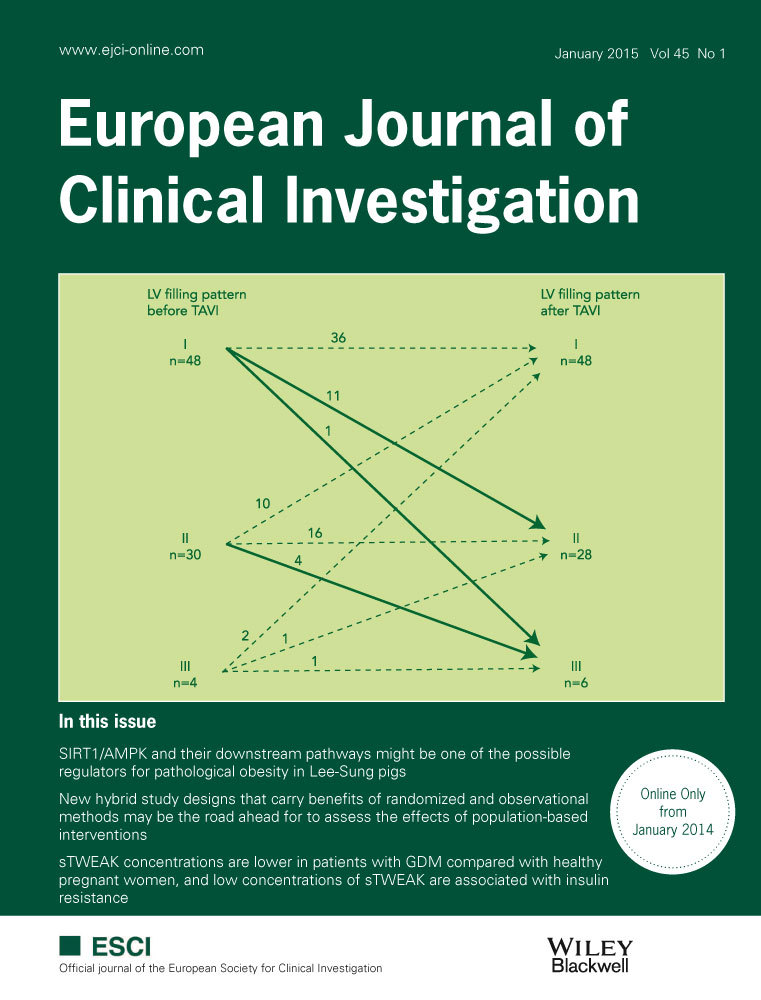Increased large VLDL particles confer elevated cholesteryl ester transfer in diabetes
Abstract
Background
Plasma cholesteryl ester transfer (CET), reflecting transfer of cholesteryl esters from high density lipoproteins (HDL) towards apolipoprotein B-containing lipoproteins, may promote atherosclerosis development, and is elevated in Type 2 diabetes mellitus (T2DM). We determined the extent to which the relationship of plasma CET with very low density lipoprotein (VLDL) and low density lipoprotein (LDL) subfractions is modified in T2DM.
Materials and methods
Plasma CET, cholesteryl ester transfer protein (CETP) mass, as well as VLDL and LDL subfractions (nuclear magnetic resonance spectroscopy) were determined in 62 patients with T2DM and 53 nondiabetic subjects.
Results
Plasma CET and CETP mass were increased in T2DM, coinciding higher triglycerides and large VLDL particles (all P < 0·02). Plasma CET was positively related to the VLDL and the LDL particle concentration in age-, sex- and diabetes status-adjusted analysis (both P < 0·001). Multivariable linear regression analysis demonstrated an independent positive interaction between the presence of T2DM and the VLDL concentration on plasma CET (β = 0·238, P = 0·033). The relationship of plasma CET with the VLDL concentration was also positively modified by plasma glucose (β = 0·211, P = 0·004) and glycated haemoglobin (β = 0·190, P = 0·012). Of the individual VLDL subfractions, a positive interaction of diabetes status with large VLDL on plasma CET was observed (β = 0·280, P = 0·003). Neither the relationship of the LDL particle concentration nor of CETP mass with plasma CET was modified by the presence of T2DM (P > 0·15).
Conclusion
Abnormalities in the concentration and composition of large VLDL particles are likely to contribute to elevated plasma CET in T2DM.




